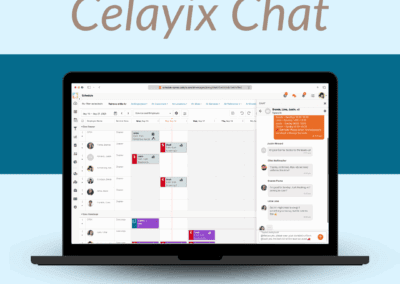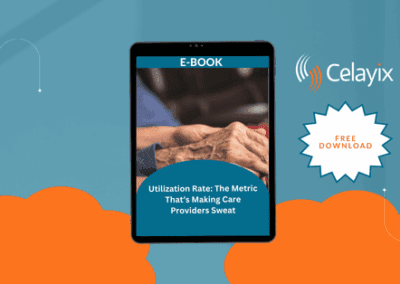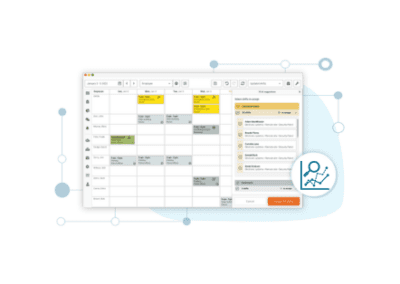Generally speaking, we spend quite a lot of time in our places of work. We spend about a third of our lives there! Compare this to the amount of time you spend in your home. Now, think about how much time and effort went into making your house feel like home—where you can be comfortable, at ease, and, most importantly, happy.
As an employer, your job is to make your organization a place where your employees can feel comfortable and safe as you did your home. Why are we talking about mental health in the workplace?

Studies show that 90% of employees say workplace stress negatively affects their mental health. And 60% of workers aren’t getting adequate supervisor support to manage stress and these feelings. This can have a detrimental impact on the mental health of your employees and your organization.
Taking mental health into consideration is vital to the success and sustainability of your business. Arguably, more importantly, it’s crucial to remember that your employees are real people; this topic should not be taken lightly.
What is Workplace Mental Health?
Workplace mental health includes how a person feels, thinks & behaves at work. In essence, it relates to the mindset that one occupies while working. Before we break down how to effectively manage mental health in the workplace, it is essential to clarify the difference between mental health and mental illness.
Mental health is a mindset or state of being that can be altered, positive or negative. Mental illness, however, is the long-term deterioration of mental well-being. This blog post will focus solely on mental health in the workplace. If your employees are experiencing issues with mental illness, they should seek advice from a medical professional.
Why Should Employers Care About Mental Health?
90% of employees say workplace stress negatively affects their mental health
Mental Health America
It’s common for managers to ask if workplace mental health is their concern and how much effort should be spent trying to improve it. More often than not, this starts to become a problem when workplace stress increases.
Generally, the only person who can help a stressed employee is a manager. This makes it pretty clear that this is an issue employers should care about and are responsible for.
According to Mental Health America, depression is one of employees’ top three workplace problems, coming in behind family crises and stress. Employers should, of course, care about these issues because their employees are important to them. However, it can have other implications for your business.
Employee retention

We’ve discussed the importance of employee retention countless times at Celayix and the cost of employee turnover. The truth is that happy employees stay put, improving your company’s employee retention rates. According to a recent survey from TELUS International, 80% of employees say they would quit their current job for one that focused more on mental health. Employers who fail to cater to the needs of their employees in terms of mental health in the workplace are at risk of losing their most important asset; their people.
Productivity
Putting yourself in your employees’ shoes, it is easy to imagine how workplace stress can drain productivity. Those who experience mental health problems typically experience sleep disorders and depression. These issues have direct impacts on the performance and productivity of your employees.
According to research, depression impacts our ability to complete physical tasks around 20% of the time and affects cognitive performance 35% of the time. Further studies show that stress and anxiety impact productivity and co-worker relations the most. As an employer, you can imagine the financial drain that these issues can lead to. Decreased productivity generally leads to reduced profitability.
Attracting top talent
As if finding the right talent wasn’t hard enough, the demands and needs of the upcoming workforce are very different than those in recent decades. Gone are the days when offering a competitive salary was enough to hire who you want. In the current job market, job seekers are looking for roles and companies where mental health is important and who want to improve their overall well-being.
Work-life balance/flexibility, culture, and work environment are the primary considerations of those looking for work. All these things are related and ensure employees’ balance, happiness and comfort. If you fail to provide a genuine work-life balance or foster a hostile work environment, you will struggle to attract top talent.
How to Manage & Improve Workplace Mental Health
To foster the right work environment that supports positive workplace mental health, keeping it top of mind is essential. The first step is often just having a conversation with your employees. Opening up the conversation immediately makes employees feel heard and supported. It also provides an opportunity for employees to provide feedback to managers and employers about how the company can further help them.

A great way to start with supporting mental health is by developing policies and programs centred around it. Whether it’s stress management programs, social support networks or other incentives, every little help. Often, the most important thing for employees is to see that management is committed to the cause and willing to learn how to help. Let’s see what else you can do as an employer to manage and improve workplace mental health.
Educate your leaders
One of the primary sources of workplace stress is leadership. Surveys show that 35% of workers say their primary source of stress at work comes from their boss. Your employees interact with their superiors daily.
If those leaders aren’t educated on mental health conditions and how they might be contributing to it, they can’t create a positive work environment. Not only that, but if they are adequately trained, they are the people on the front line that can identify mental health issues before they become a problem!
Build a positive & inclusive work culture
Diversity and inclusivity have been hot topics of late, and rightly so. For all you know, you might have employees at your organization putting up a front to “fit in.” As you can imagine, feeling excluded/isolated for being who you are or simply hiding who you are can damage mental health. This is why employers need to create a culture where everyone feels valued for who they are.
Check-in regularly
Finally, nothing beats sitting down with your employees and checking in with them. Giving everyone the time and attention they need to voice their worries, stress, or anxiety can be highly effective. If know of any employees with a history of mental health struggles, be sure to check in with them more often. As mentioned above, employees appreciate it when employers do their bit and pay attention to workplace mental wellbeing.
What better way to show you care than dedicating your time to the issues? While it may feel like a waste of time, improving the well-being of your employees will ultimately lead to improved productivity and profitability and decreased absenteeism and turnover. All of these changes will improve your bottom line!




